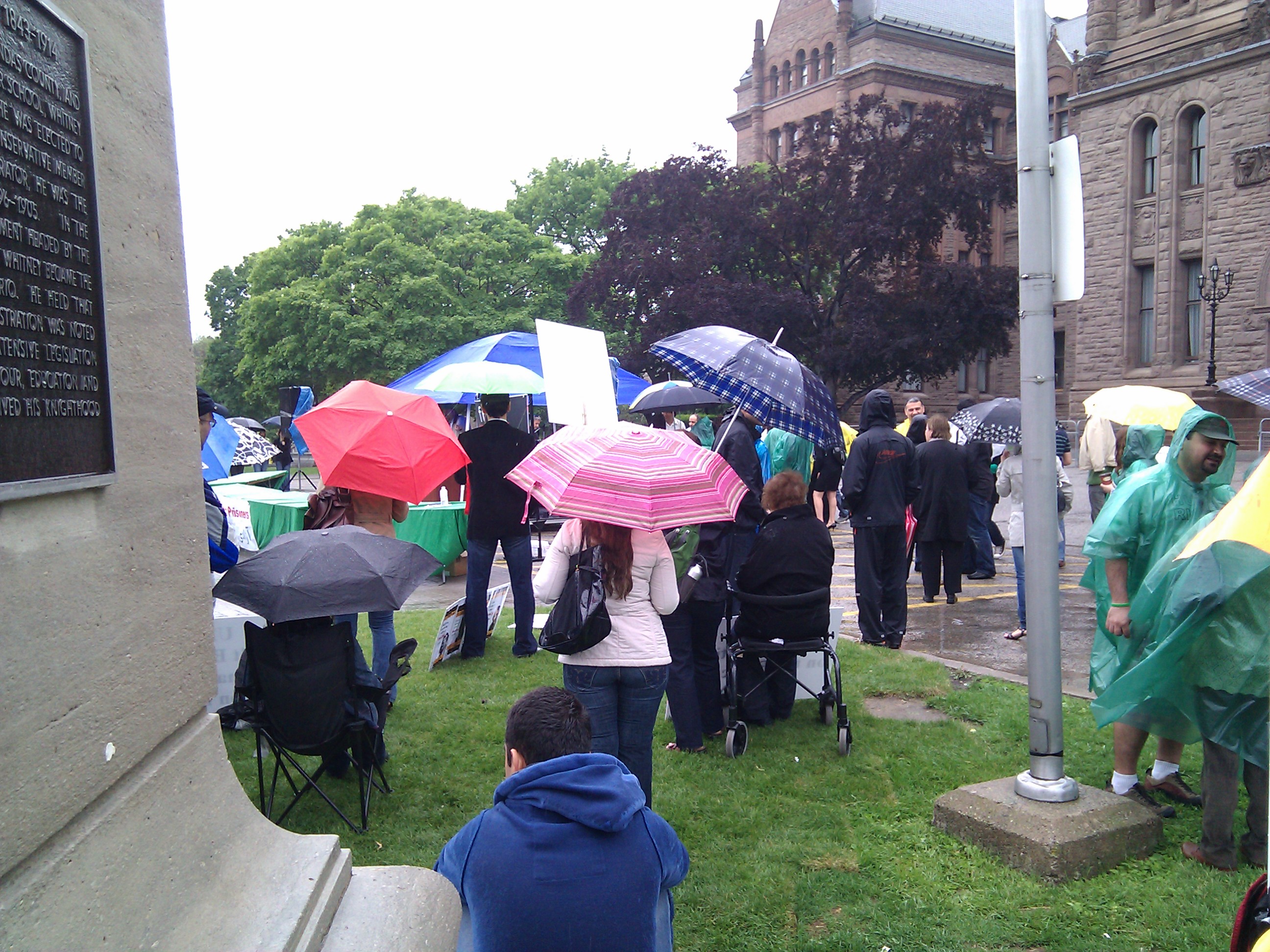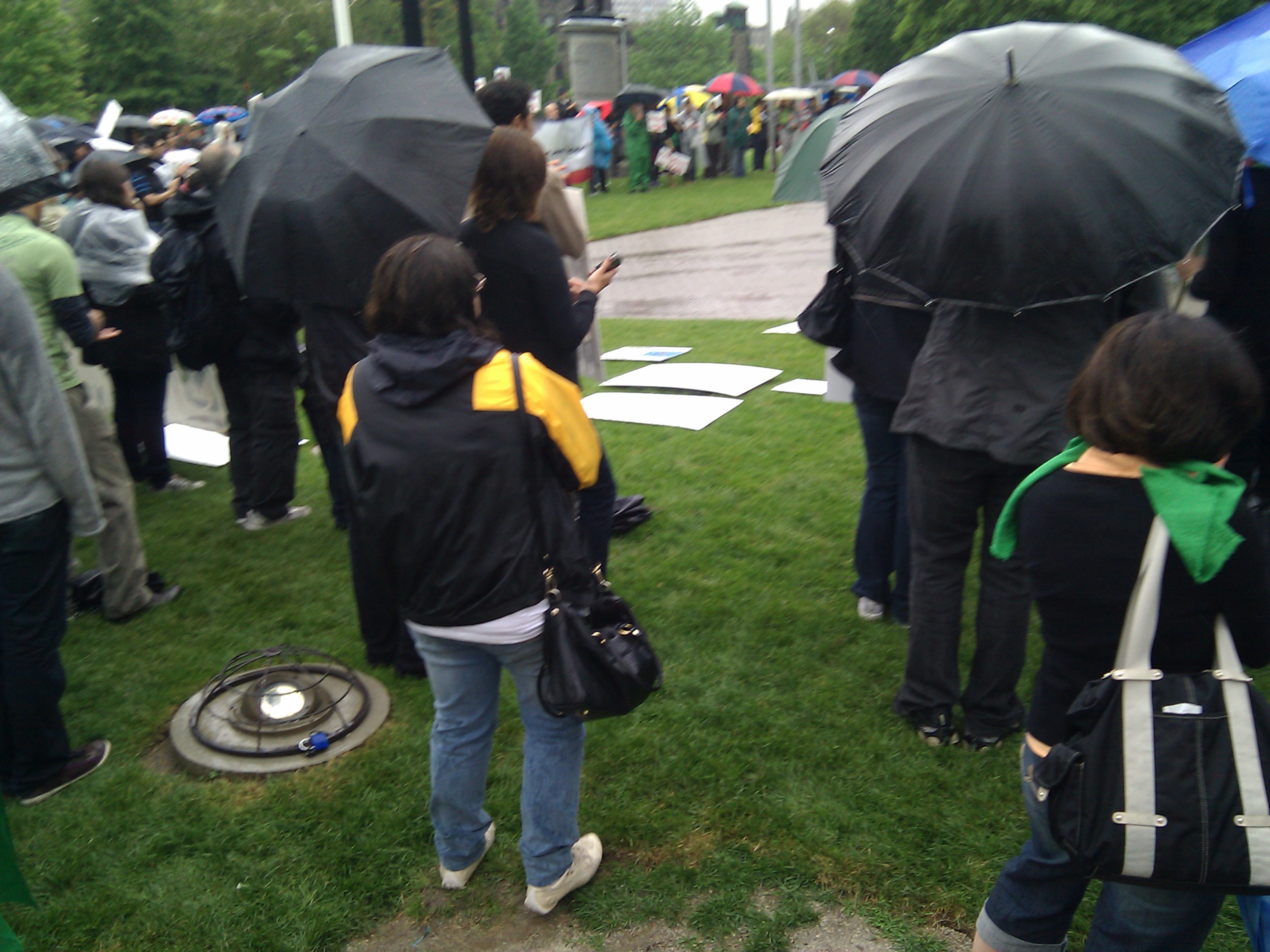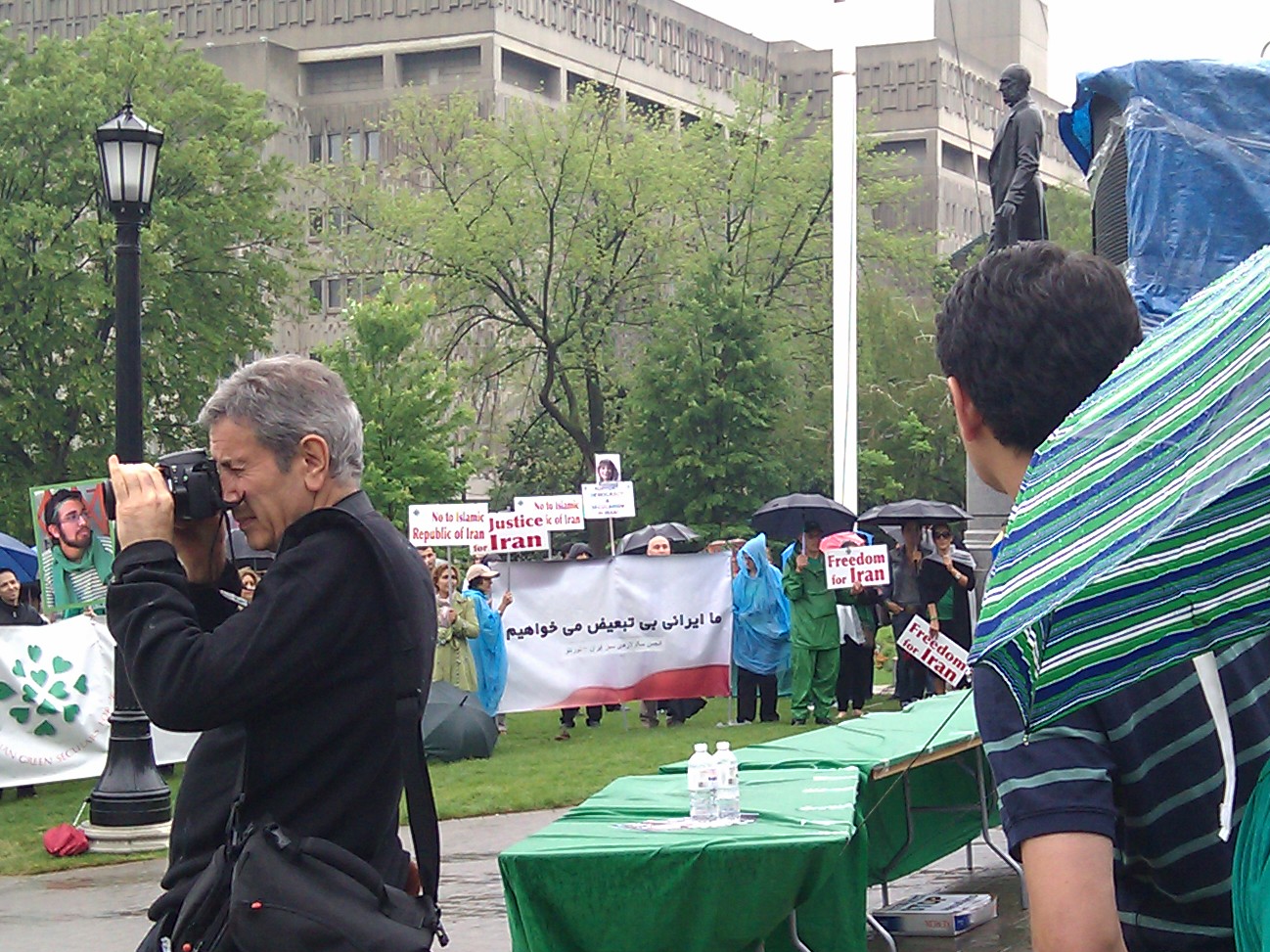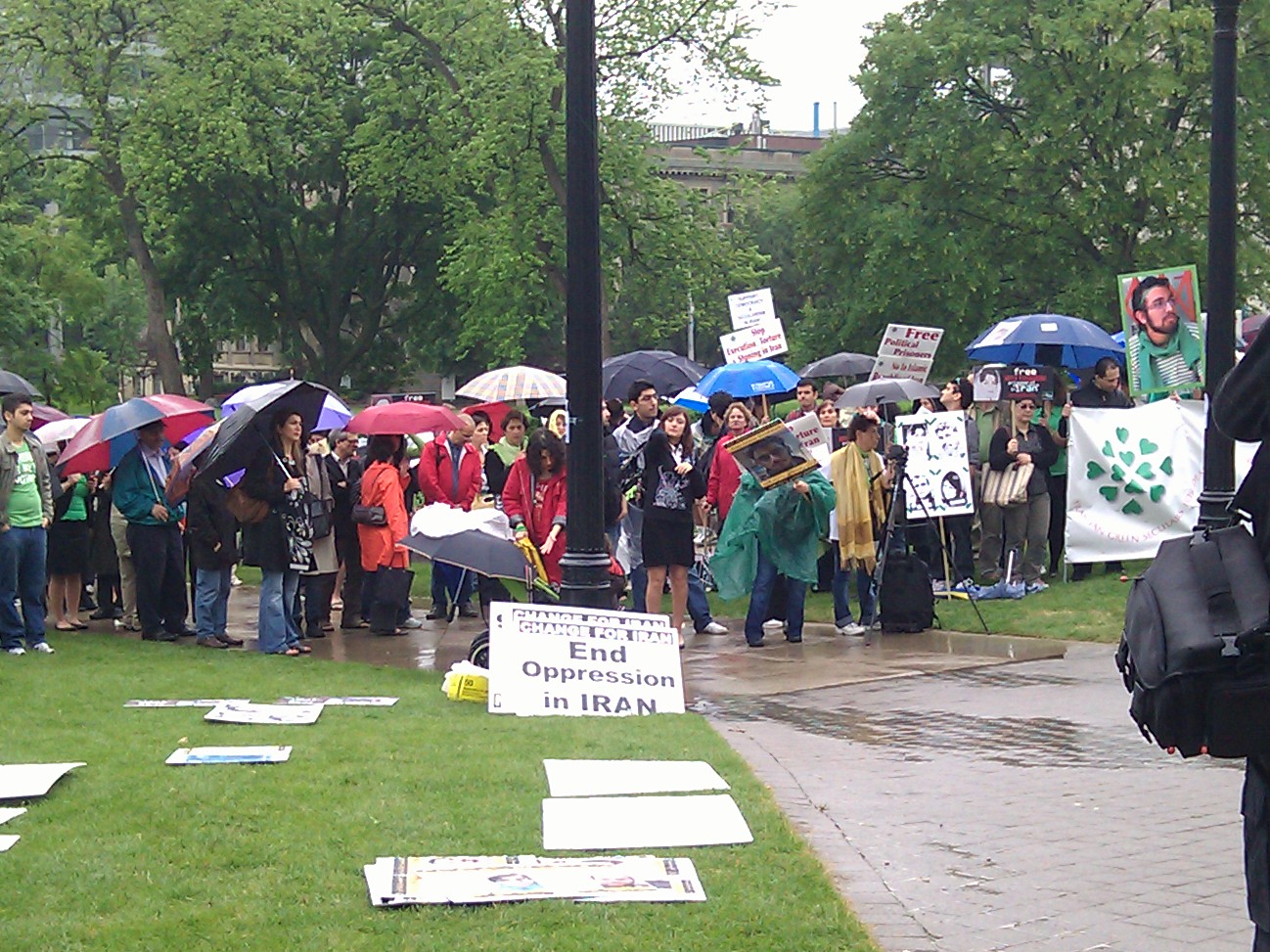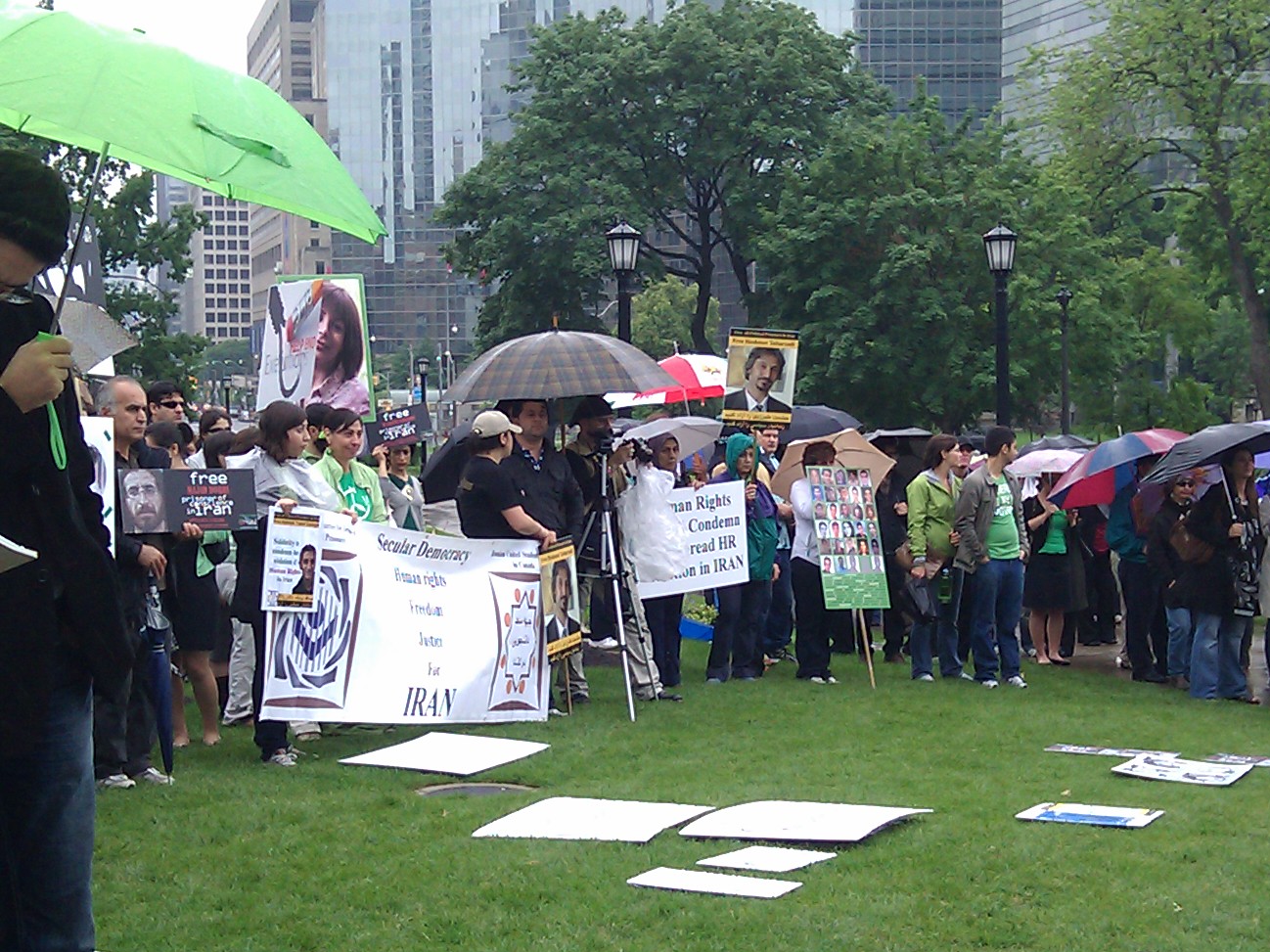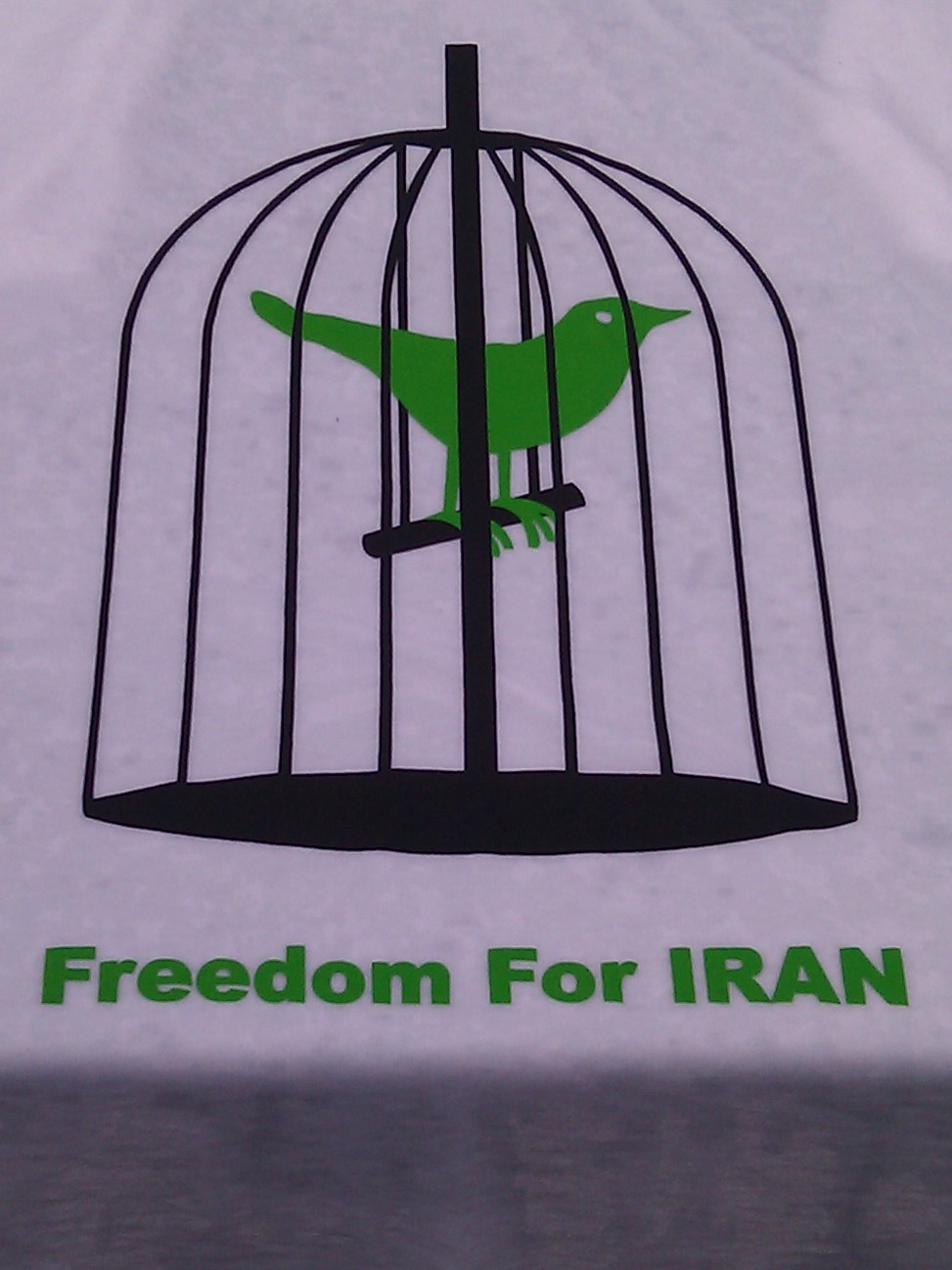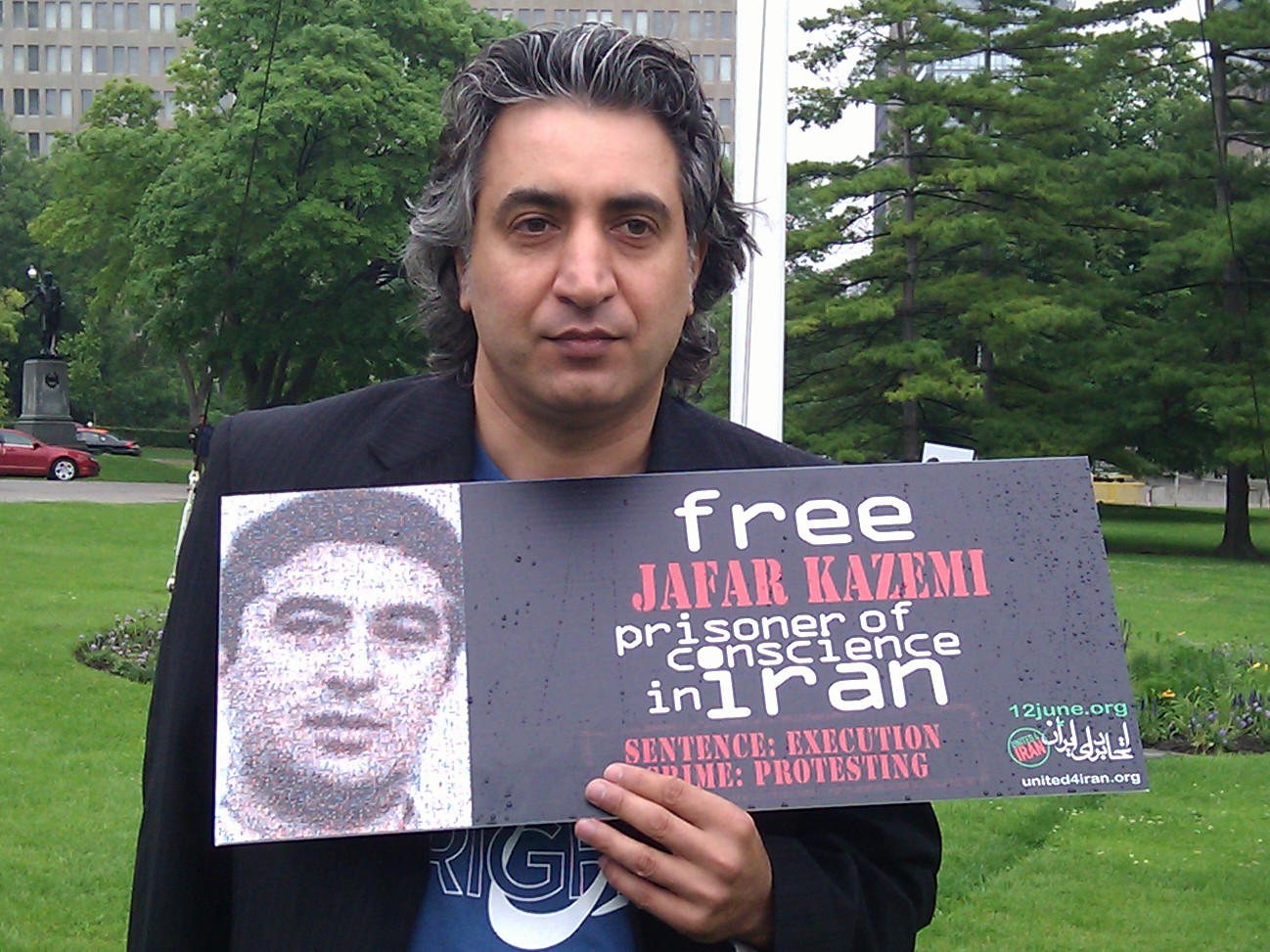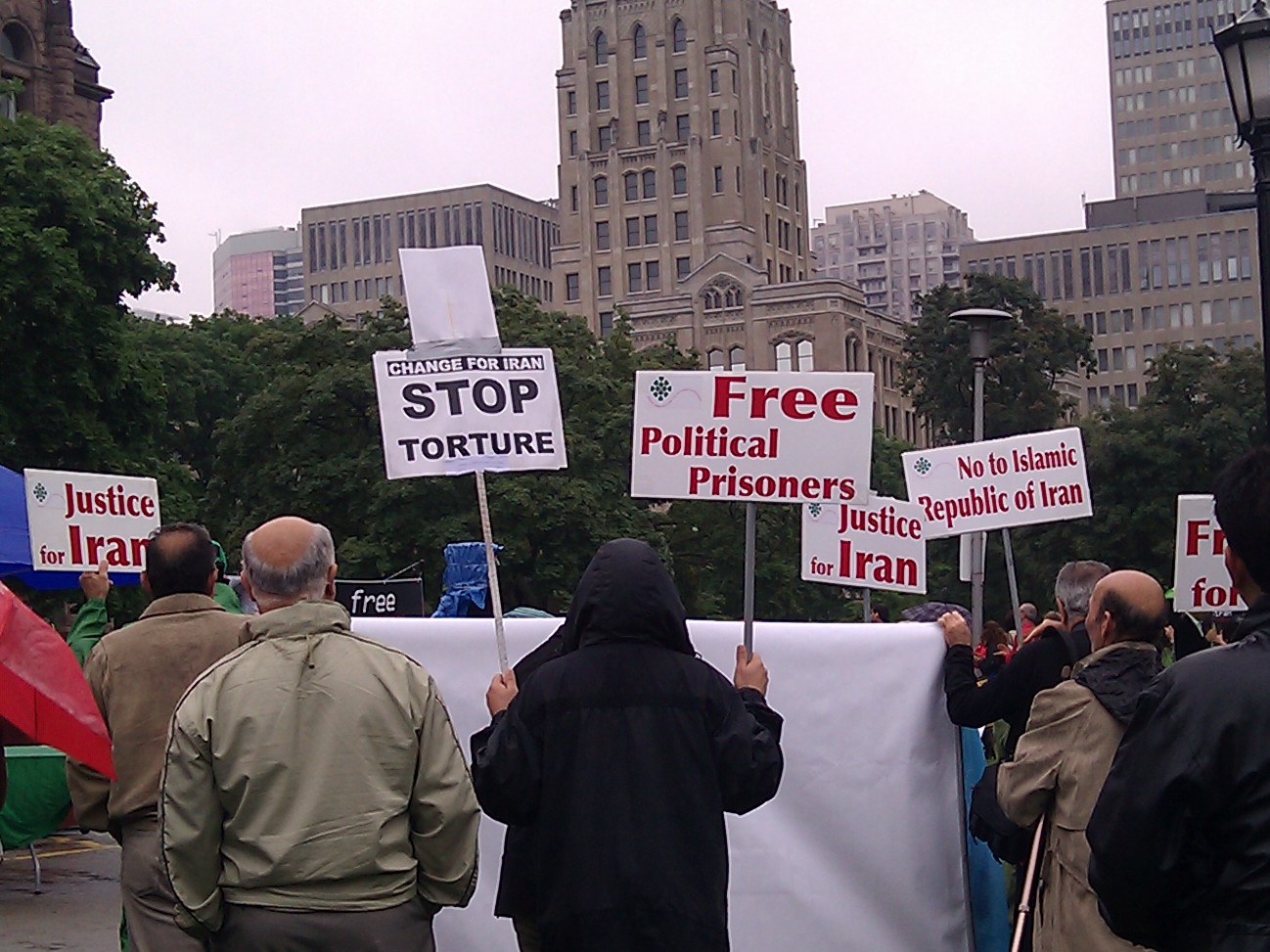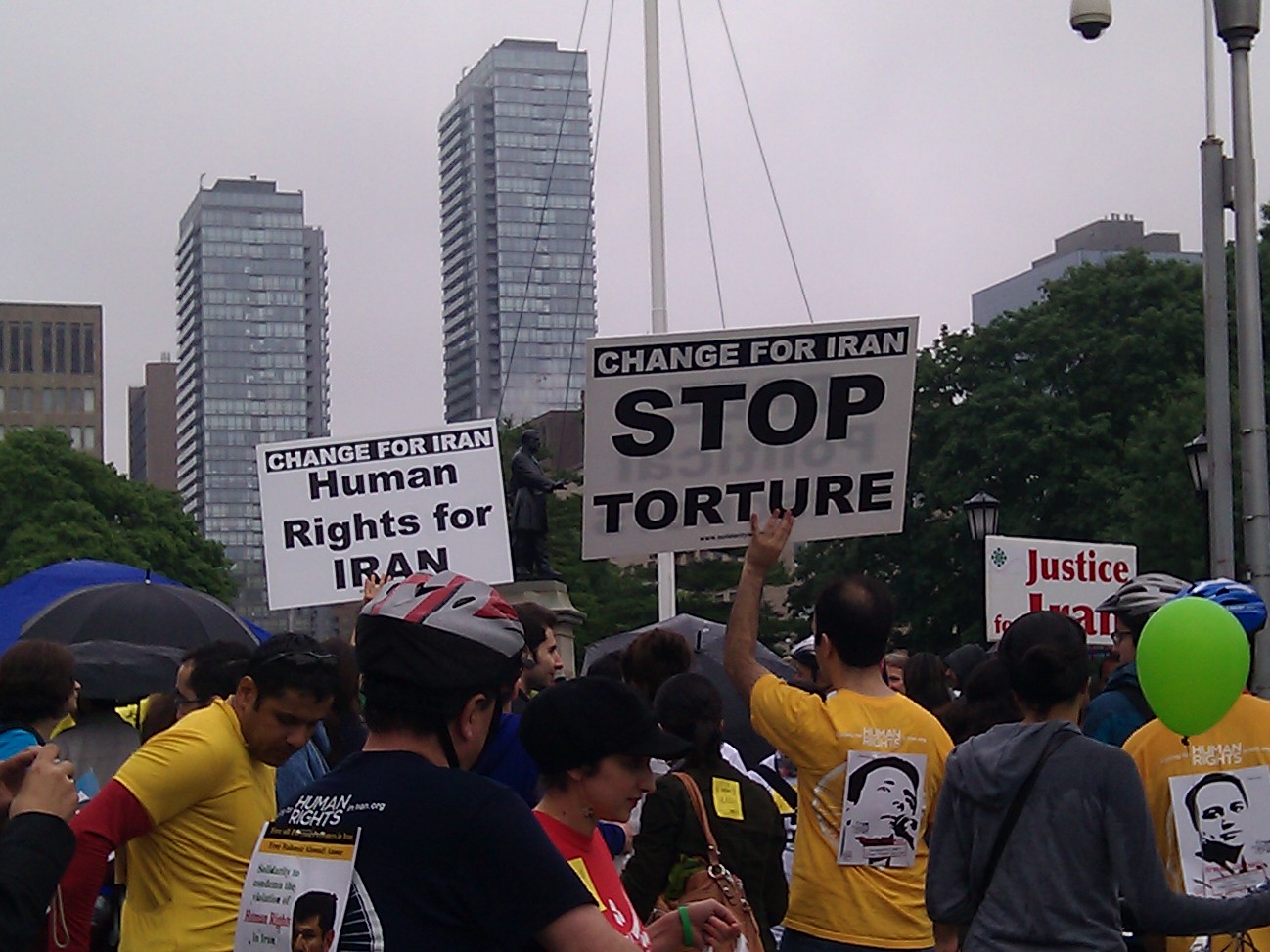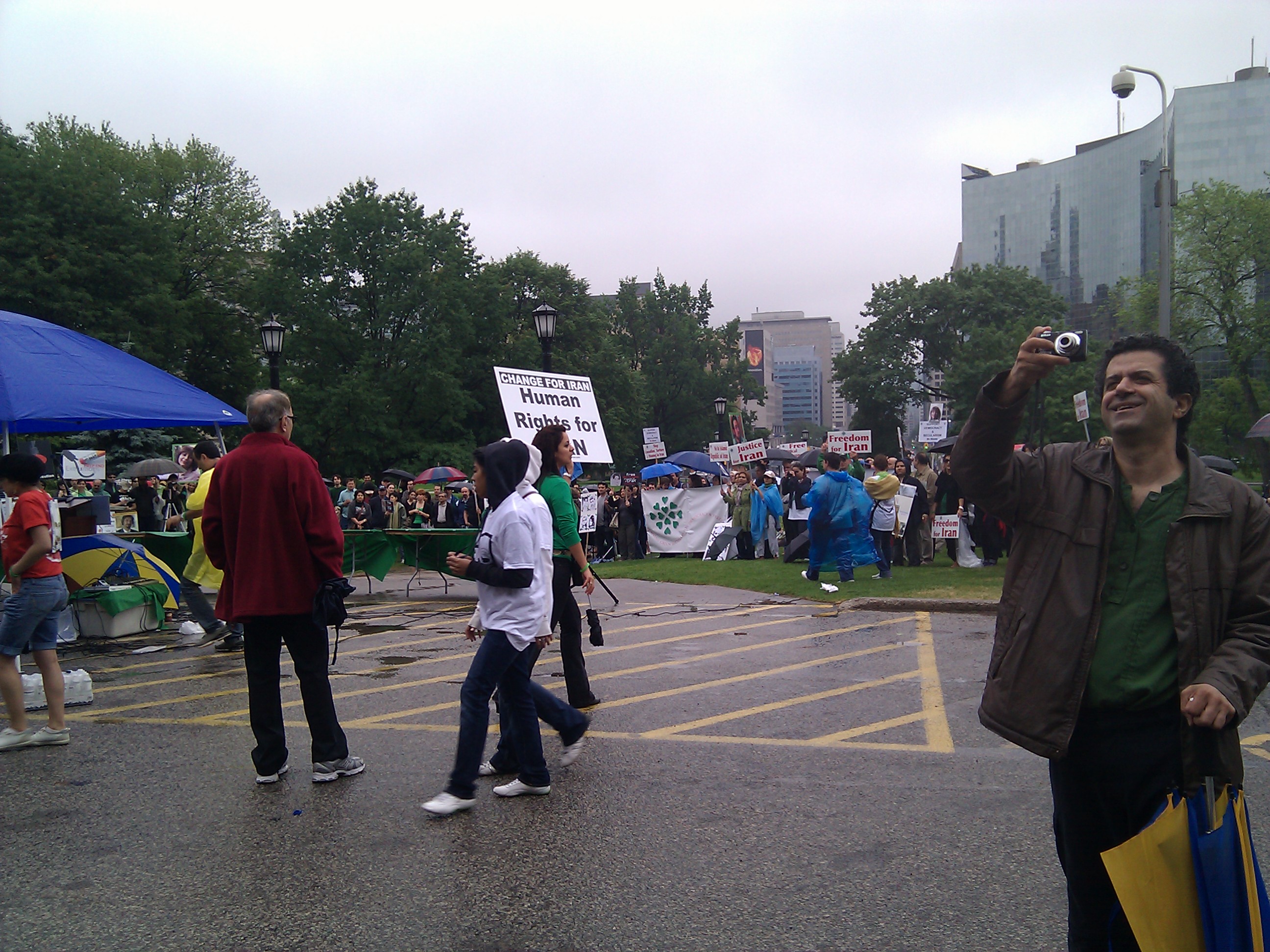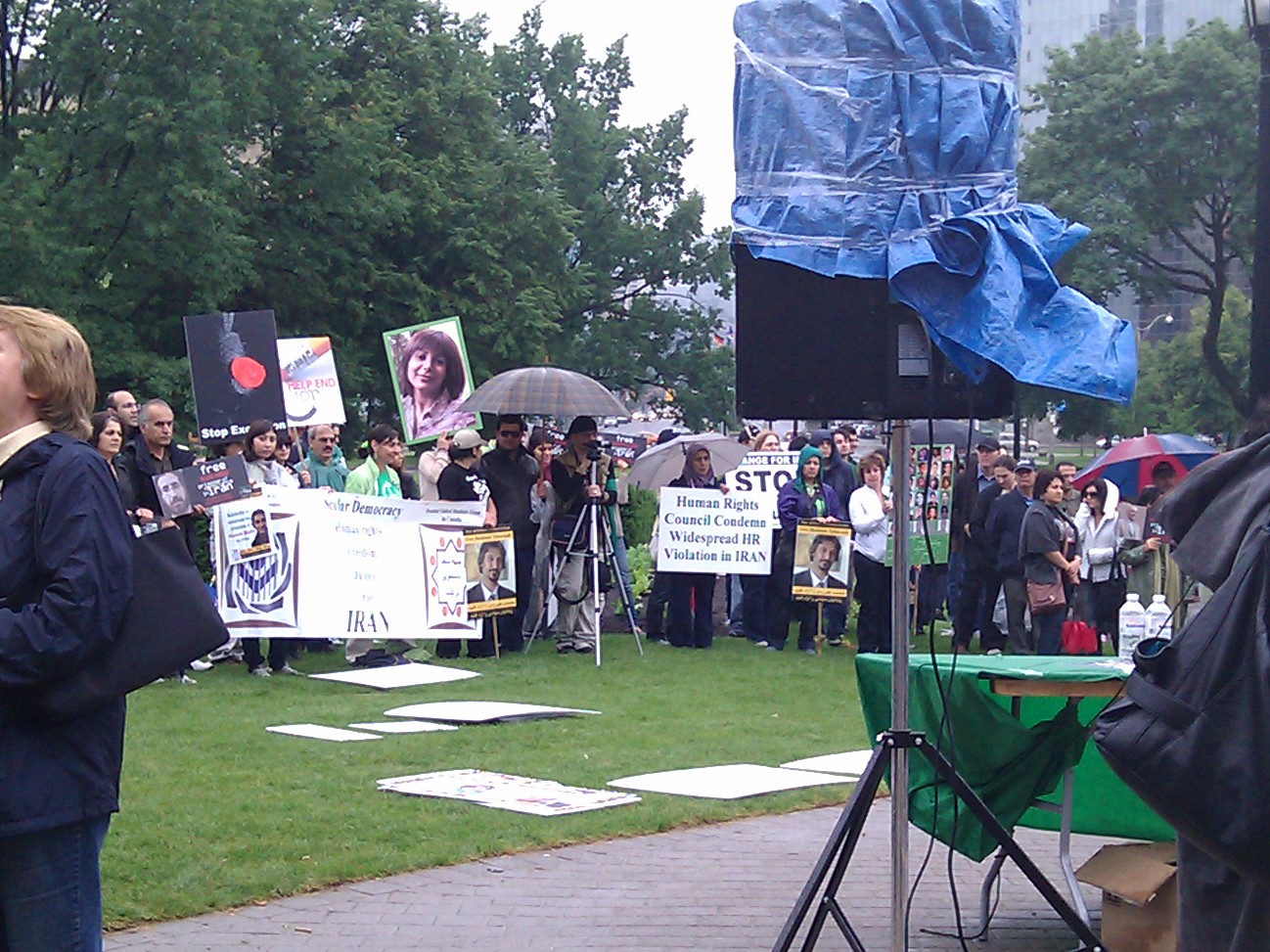Toronto Star‘s article, “Just being near the G20 security zone can get you arrested”, has added more fuel to the fire today as it reveals that a new Ontario regulation came in force on June 21, 2010 without adequate notice to the public. The regulation, Ontario Regulation 233/10 (or Ont. Reg. 233/10), was filed on June 14, 2010 and listed on the e-laws site on June 16, 2010. (It won’t be published in the Ontario Gazette until July 3, 2010, after it is revoked.) This regulation makes use of the Ontario Public Works Protection Act (PWPA) as a way to give more power and authority to not only official police forces, but also anyone who is a “guard” of a public work. (“Guard” as defined in the Act “means a guard appointed under” the PWPA.) While the PWPA is not a new Act, it is the sly way that the regulation was put in place that has given people cause to worry that the powers as defined in the PWPA may be taken too far or, for that matter, may be unconstitutional to begin with. The regulation was not passed in provincial legislature, but was rather passed as an “order in council” only on June 2, 2010. This new temporary regulation (temporary as it will be revoked on June 28, 2010) was brought to media’s attention following the arrest of Dave Vasey who clearly did not know that a regulation was passed in accordance with the PWPA.
For clarification, here’s how the regulation and the PWPA work together. Ont. Reg. 233/10 details the area that is being considered a “public work”, the two five-meter areas enclosing it, and a driveway area. As is typical with every Ontario Act, the Lieutenant Governor in Council may make any regulations pertaining to that Act. Under the PWPA, a “public work” includes “any other building, place or work designated a public work by the Lieutenant Governor in Council”. The PWPA states that “Every person appointed as a guard under this section has for the purposes of this Act the powers of a peace officer.” (Section 2, subsection 2) This is worrisome as now you suddenly have security guards with the full powers of a police officer, without the actual (extensive? debatable according to some opinions) training a police officer may have undergone.
The most troubling sections of the PWPA are Section 3 “Powers of guard or peace officer” and Section 5 “Refusal to obey guard, etc” and “Arrest”.
Section 3 “Powers of guard or peace officer” says,
“A guard of peace officer,
(a) may require any person entering or attempting to enter any public work or any approach thereto to furnish his or her name and address, to identify himself or herself and to state the purpose for which he or she desires to enter the public work, in writing or otherwise;
(b) may search, without warrant, any person entering or attempting to enter a public work or a vehicle in the charge or under the control of any such person or which has recently been or is suspected of having been in the charge or under the control of any such person or in which any such person is a passenger; and
(c) may refuse permission to any person to enter a public work and use such force as is necessary to prevent any such person from so entering.”
Section 5(1) “Refusal to obey guard” says,
“Every person who neglects or refuses to comply with a request or direction made under this Act by a guard or peace officer, and every person found upon a public work or any approach thereto without lawful authority, the proof whereof lies on him or her, is guilty of an offence and on conviction is liable to a fine of not more than $500 or to imprisonment for a term of not more than two months, or to both.”
While Section 5(2) “Arrest” further underlines,
“A guard or peace officer may arrest, without warrant, any person who neglects or refuses to comply with a request or direction of a guard or peace officer, or who is found upon or attempting to enter a public work without lawful authority.”
I personally feel that these sections, as outlined above, being used as a way to provide further security to an area by temporarily marking the area as a “public work” brings up some human rights concerns and should be consider unconstitutional and contrary to the Canadian Charter of Rights and Freedoms (CCRF). Let’s examine each section in turn.
Section 3(a) requires people to provide “his or her name and address, to identify himself or herself and to state the purpose for which he or she desires to enter the public work”. Understand that public works are generally government buildings which are permanent structures and which are clearly marked as such, but in this case, without adequate notice to the general populace we have an area marked as a “public work” where people must now have to provide identification. Normally, because a public work is clearly marked and the general populace has over time gotten to know that it is a public work, Section 3(a) does not pose a problem. However, we have an area temporarily marked as a public work and we suddenly do not have the freedom to wander even outside in that general area without being stopped and asked to provide identification or being required to answer any other questions from police or security guards. I find this contrary to Section 7 of the CCRF regarding “Life, liberty, and security of person” which states “Everyone has the right to life, liberty and security of the person and the right not to be deprived thereof except in accordance with the principles of fundamental justice.” In the Universal Declaration of Human Rights (UDHR), for which Canada is a party state to, Article 3 also reads “Everyone has the right to life, liberty and security of person.”
Section 3(b) gives guards the right to “search, without warrant, any person entering or attempting to enter a public work” which means that we cannot go into this temporarily marked “public work” area without fear of being searched. This is contrary Section 8 of the CCRF “Search or seizure” which states “Everyone has the right to be secure against unreasonable search or seizure.” Section 3(b) makes it all too easy for guards to be unreasonable in wanting to search people. They may want to search someone at random with no due cause or reason to suspect the person of any wrongdoing making it an “unreasonable search”. Note that Section 3(b) also applies to a vehicle or vehicles a person who is wanting to enter the public work may be in charge or under control of and also any vehicle that person “is suspected of having been in the charge or under the control of”. It also applies to any vehicle in which that person is/was a passenger.
Section 3(c) is, in my opinion, badly written and should have included the word “reasonable” in front of “force” so that it reads “use such reasonable force as is necessary to prevent…” Without the word “reasonable” inserted, Section 3(c) gives guards to the public work too much authority and leeway to use as much force as they wish in order to refuse someone entrance to the public work, as long as they can say it was “necessary”. This can easily lead to police brutality, which is a human rights issue. In the UDHR, Article 5 states “No one shall be subjected to torture or to cruel, inhuman or degrading treatment or punishment.” The CCRF under Section 12 “Treatment or punishment” also says, “Everyone has the right not to be subjected to any cruel and unusual treatment or punishment.” Simply put, guards and police do not have the right to beat any peaceful protesters in order to prevent them from entering a public work. To do so is unconstitutional and, more seriously, a human rights offence.
Section 5 of the PWPA is what gave authority for the police officer to arrest Dave Vasey. According to the Toronto Star article on his arrest (linked above):
Vasey was arrested Thursday afternoon while exploring the G20 perimeter with his friend, Cameron Fenton. He said they were just “walking around” when they were stopped by police at York St. and Bremner Blvd.
“The officer told me, ‘I am going to have to place you under arrest if you don’t show your identification,’ and I replied ‘I’m not comfortable with that.’”
Vasey said he had been provided with legal information prior to the G20 from the Toronto Community Mobilization Network, an umbrella group supporting thousands of protesters descending on the city.
“But (police) told me there was this bylaw,” he said. “I didn’t know what they were talking about.”
Vasey was held under the Public Works Protection Act and charged with refusing to comply with a request of a peace officer. His bail lawyer, Howard Morton, said that, as far as he knows, Vasey is the first to be arrested under the new regulation.
Vasey was released sometime later, around 9 p.m. and commented that he only learned of the regulation after his release. The Toronto Star notes that the Summit’s Security Unit did not respond to inteview requests.
The issue I have with Section 5 is the same as I explained for Section 3(a). It’s simply the fact that there was no adequate notice given about this temporary regulation (short notice can be proven to be inadequate notice in some cases, and I think it should be considered inadequate notice in this case). Protesters were actually given legal advice leading up to the G20, but none of the legal advisors knew about this regulation so no protesters were given the warning ahead of time of the requirement to have identification with them, even for just walking around the perimeter of the G20 area. Considering that the regulation was only published on e-laws on June 16, 2010 and went into force only five days later on June 21, 2010, proper notice to the public should have been made via mainstream and popular media. I can’t seriously believe it would have been too hard to have made a press release, which would have then quickly made its way known to the public via instant online communication sites such as Twitter.
I should point out here that Section 5(1) of the PWPA is like Section 3(a) in that it may have been written for the purpose of protecting government buildings that people may want to break into. Like I mentioned, government buildings are permanent structures and clearly marked or at least over time are known to be public works by the general populace. Generally, no one would be found on a public work without lawful authority unless they were trying to break into it. Obviously, entering a public work when it is open (such as a driver’s licensing office) is not an offence. Section 5(1) says that anyone unlawfully entering a public work “is guilty of an offence and on conviction is liable to a fine of not more than $500 or to imprisonment for a term of not more than two months, or to both.”
Section 5(2) is straightforward and is typically found in regulations when they need to give proper authority for making arrests. Again, I reiterate that the problem here isn’t the section itself since it was likely meant as a way to protect government buildings, but rather the fact that it’s being used as a way to provide more authority to guards and police officers by simply designated an area, which used to be free for people to walk in, as a “public work”. This may lead to arbitrary arrests and detention of civilians, a human rights offence and also unconstitutional. Article 9 of the UDHR states, “No one shall be subjected to arbitrary arrest, detention or exile.” Section 9 of the CCRF “Detention or imprisonment” states too, “Everyone has the right not to be arbitrarily detained or imprisoned.”
To sum up, here’s where the problem lies as I see it. The PWPA should not be used to temporarily and on short notice declare an area as a “public work”, effectively declaring it off-limits to the general populace. Doing so has to the questioning of the constitutionality of the PWPA and whether or not it can lead to human rights violations. Measures should be put in place to prevent the passing of any regulation on short notice. Regulations for the PWPA should be passed through Legislature (Provincial Parliament) and not simply by an “order in council”. Apparently, I’m not the only one questioning how this regulation got passed, the due process of notification, the constitutionality of it, and that it may be a human rights concern. From the first Toronto Star article linked above:
“It’s just unbelievable you would have this kind of abuse of power where the cabinet can create this offence without having it debated in the Legislature,” said Howard Morton, the lawyer representing Dave Vasey, who was arrested Thursday under the sweeping new police powers.
“It was just done surreptitiously, like a mushroom growing under a rock at night.”
…
[Nathalie] Des Rosiers is a lawyer with the Canadian Civil Liberties Association, which has been working to monitor arrests during the summit. “This is highly unusual to have this declaration done by order-in-council without many people knowing about it.”
…
According to Vasey’s lawyer, neither he nor his colleagues at the law union were aware of this draconian new regulation. Des Rosiers said the CCLA and protesters have met with summit officials on several occasions and the regulation was never mentioned.
“They don’t even have signs up saying you can’t be within five metres or you’re subject to the following,” Morton said. “If they really wanted to keep the peace, they would have announced the regulation.”
…
Morton said he’s unaware of any precedents to such a regulation being passed in Ontario and questions if it is even constitutional.
Des Rosiers said the regulation runs contrary to the Charter of Rights because it prohibits people from generally circulating on public land.
The G20 security fence has been a magnet for passersby and protesters alike, with many people approaching to take pictures or just quench their curiosity.
For Des Rosiers, she is especially worried because most people, including protesters, will operate under the assumption they have a right to refuse handing over identification to police.
“Protesters would have been told that the law of the land is that you don’t have to talk to police officers if you don’t want to,” she said. “This changes things because even if you attempt to approach, it gives the power to the guard to demand identification.
“It’s a significant intrusion on people’s rights.”
Rabble.ca writer, Krystalline Kraus, has quickly put up an article, “G8/G20 Communique: New powers of arrest for police” providing some information and advice for protesters in consideration of this new regulation.
WHAT YOU NEED TO KNOW:
— According to the new regulation, “guards” appointed under the act can arrest anyone who, in specific areas, comes within five metres of the security zone.
–Within those areas, police can demand identification from anyone coming within five metres of the fence perimeter and search them. If they refuse, they face arrest. Anyone convicted under the regulation could also face up to two months in jail or a $500 maximum fine.
[Cass’ note: You may actually be fined AND face up to two months in jail according to Section 5(1) of the PWPA. Additionally, as mentioned above, the police may use force to prevent you from entering the area.]
…
So please: don’t go anywhere alone; ALWAYS TRAVEL WITH A BUDDY
Please, try to not let this news panic – empower yourself with as much information as you can.
And don’t isolate yourselves – talk to other activists about how you feel about these new draconian police powers and plan among your friends or affinity group how you guys want to move forward.
Below, I have provided a map of the general area described as in Schedule 1 of Ontario Regulation 233/10. Where it is unclear what the line is between two markers, please read the descriptions with the markers. It was hard to determine where some points are supposed to be on the map, but with the actual descriptions from the regulation, it should help.
View G20 Perimeter in a larger map
Please, stay safe. Don’t wander around by yourself. Stay informed. Know your rights – and keep it peaceful. If it turns violent, please leave the scene. Get out of the area and contact someone you trust.
~~~C
Your local blogger
